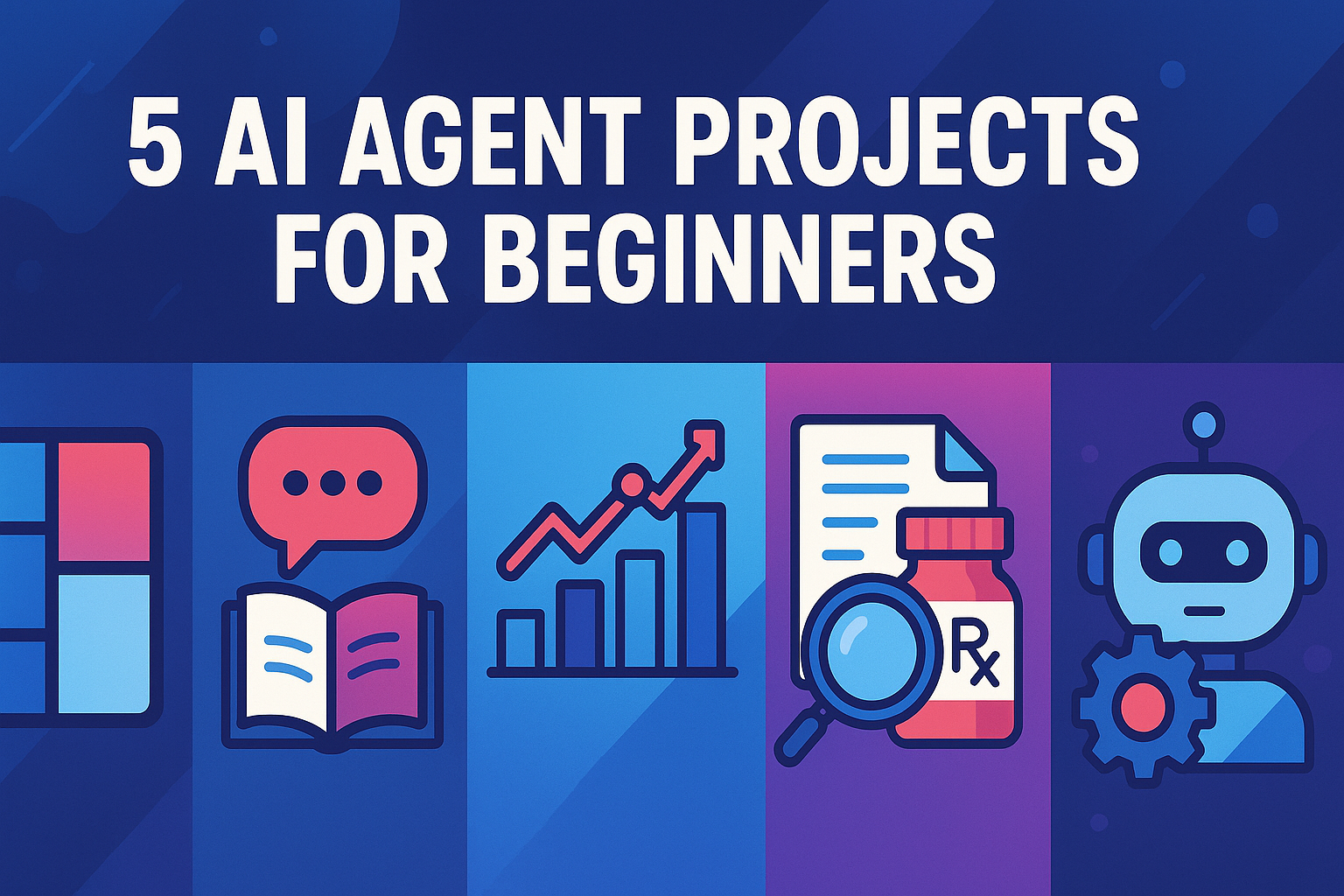
5 AI Agent Projects for Beginners
Image by Editor | ChatGPT
Introduction
Agentic AI is a hot topic right now. These are tools that not only answer questions but can also plan, reason, and take action using various tools and APIs. If you are interested in this technological shift and looking for a practical way to get started, this guide is for you.
We will walk you through five beginner-friendly AI agent projects that are easy to replicate, require minimal setup, and don’t necessitate advanced coding skills.
1. Image Collage Generator with ChatGPT Agents
ChatGPT Agents are AI assistants capable of thinking and acting independently. They can proactively select tools and utilize a built-in virtual computer to complete tasks from start to finish.
To enable Agent Mode in ChatGPT, follow the guide provided in OpenAI’s Help Center to get started.
For this project, provide ChatGPT with a clear prompt to open https://openai.com/index/introducing-chatgpt-agent/. Ask it to gather all the benchmark images from that page, arrange them into a 16:9 collage, and draw red outline rectangles around the columns that display the agent’s results. No technical skills are required, just patience and a few follow-up prompts to refine the alignment and export the final image.
Project guide: ChatGPT Agent

Image Collage Generator with ChatGPT Agents
2. Language Tutor with Langflow
Langflow is a low-code, visual builder for creating agentic and retrieval-augmented generation (RAG) applications: you drag and drop components to assemble “flows” that connect LLMs, tools, and data sources, then test and share them in a visual editor.
In this project, you will use Langflow to build a simple language-learning assistant that generates short reading passages using only the learner’s known vocabulary. The agent can add new words via a tool, another component loads the current vocabulary, and a story-generation tool creates texts constrained to those words, all orchestrated by a main chat agent.
Project guide: Langflow: A Guide With Demo Project

Language Tutor with Langflow
3. Data Analyst with Flowise
Flowise is an open-source visual builder designed for AI agents and large language model (LLM) workflows. It allows users to create applications by assembling prompts, models, tools, and data connectors into drag-and-drop nodes, enabling quick prototyping and deployment of intelligent applications.
In this project, you will create a data analyst agent that connects to a SingleStore database. The agent uses a custom code node (mysql2/promise) to describe the table and extract schema information. It then feeds this data, along with the user’s question, into a prompt and LLM chain to generate an SQL query. The query is executed in another code node, and the agent returns a clear answer that includes both the SQL query and the results, all within a Flowise chat flow.
Project guide: Flowise: A Guide With Demo Project

Data Analyst with Flowise
4. Medical Prescription Analyzer with Grok 4
Grok 4 is xAI’s flagship model, available through the xAI API. It comes with advanced vision reasoning, function calling, and native tool integrations.
In this project, we are developing a medical prescription analyzer. Grok 4 will analyze prescription images to extract the names of medications. It will invoke Firecrawl tools, either individually or simultaneously, to retrieve descriptions, prices, and links. The results will then be compiled into a clean markdown report. A lightweight Gradio user interface will allow users to upload an image, view streaming logs, and access the final summary.
Project guide: Building a Medical AI Application with Grok 4

Medical Prescription Analyzer with Grok 4
5. Custom AI Agent with LangGraph and llama.cpp
LangGraph allows you to build reliable, tool-using agents as graphs, while llama.cpp offers a fast, local LLM runtime with an OpenAI-compatible server, making it ideal for low-latency, on-device workflows.
In this project, you will set up llama.cpp’s llama-server using a Gemma 3 4B IT GGUF model. Then, you will configure LangChain‘s ChatOpenAI to point to http://localhost:8000/v1. Finally, you will use LangGraph’s create_react_agent to connect a ReAct agent with tools like Tavily search and a Python REPL. The result is a local agent capable of browsing for up-to-date information and executing code, all powered by your self-hosted model backend.
Project guide: Building AI Agents with llama.cpp

Custom AI Agent with LangGraph and llama.cpp
Wrapping Up
I strongly believe in learning through experience. I encourage my students to build projects because this approach accelerates understanding, provides hands-on experience, and, most importantly, helps them create a portfolio that attracts real opportunities.
Even if you come from a business background, you can still undertake these projects. Each one includes links to guides and clear steps to help you get started.
After you complete all five projects, don’t stop there:
- Share your work with your network.
- Ask for feedback and make improvements.
- Add the projects to your portfolio and resume.